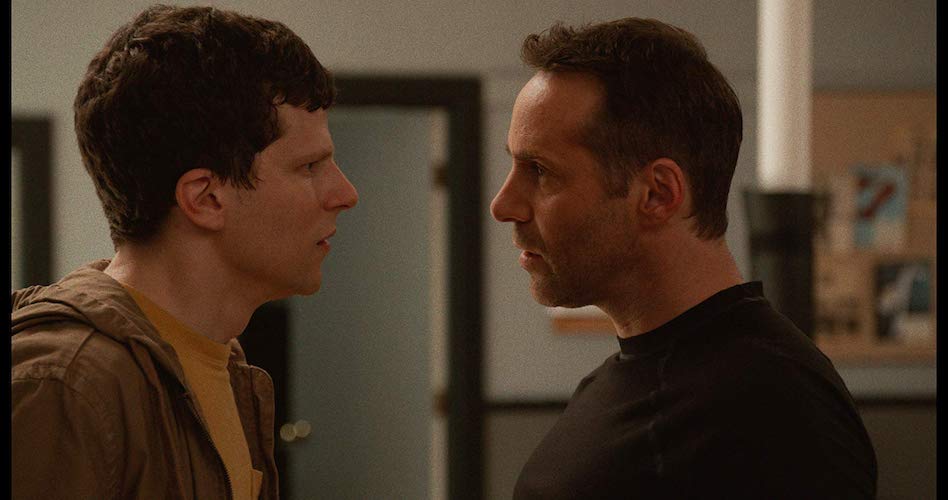
“Every single one of us has the capacity to be captivated, manipulated, controlled.” That’s a direct quote taken from Faults, a little gem-of-a-film from 2014 about mind-control, written and directed by Riley Stearns. With his recently released second film, The Art of Self-Defense, Stearns has once again crafted a dark and funny examination of a puppet master and his followers, a topic that has become increasingly relevant during the five-year interim.
Jesse Eisenberg stars as Casey, a milquetoast accountant intimidated by other men. Following a violent mugging he decides he needs some form of protection. After getting discouraged from buying a handgun due to the mandatory waiting period, Casey wanders into a nearby Karate studio. Impressed by what he sees, he introduces himself to the studio’s owner. “My name is Sensei,” the owner tells him. In actuality, “Sensei” is a Japanese title meaning “Martial Arts teacher.” Claiming it’s his name is Red Flag Number One, hinting at a massively pretentious ego while keeping his actual name in reserve for a third-act payoff.
Inspired by Sensei’s confidence, Casey signs up for lessons. When he breaks a cardinal rule by stepping onto the dojo’s mat while wearing his shoes, one of Sensei’s instructors, Anna, played by Imogen Poots, gives him a stern dressing-down. Kneeling to remove them, Casey disregards Red Flag Number Two: a fresh-looking bloodstain on the floor. What soon unfolds is a dark fable about a physically weak unassertive man striving to become, as he puts it, that which he fears.
The film’s humor is derived from Sensei’s ridiculous philosophy that aggressive masculinity equals strength and his insistence that Casey make everything he does as masculine as possible, such as studying German instead of French, and listening to Heavy Metal instead of Pop. Casey’s willingness to blindly follow Sensei’s increasingly extreme instructions might strain credulity. But when you consider how Casey represents disenfranchised victims of a dog-eat-dog society, ripe for exploitation on the promise of empowerment, The Art of Self-Defense is disturbingly contemporaneous; parallels can be drawn between the narcissistic insular world that Sensei has created for himself, replete with unquestioning followers, and that of a particular wall-obsessed politician.
Though the acting isn’t particularly memorable it fits the material. Casey is the type of character that Jesse Eisenberg can play without even trying. His pasty-white skin, delicate features and feeble voice are all that’s needed. Unfortunately, Imogen Poots is merely age and gender-appropriate. Alessandro Nivola’s performance as Sensei leaves a better impression. With his perpetual five o’clock shadow, macho posturing and misogynistic ideology, he’s the personification of toxic masculinity.
Stearn’s approach to filmmaking appears to be heavily influenced by the films of Todd Solondz. Music is used sparingly and the visual compositions are stark and minimalistic. The only people shown in frame are those that matter, even during exterior shots. This applies to vehicles as well, creating a subtly artificial, slightly alternate-universe feel that gives license to the more absurd things that occur while reflecting Casey’s hermetic lifestyle and feelings of alienation. And, like Solondz, Stearns ventures into disquieting territory in pursuit of laughs. Those in the mood for something light and frothy should give this film a wide berth. But if you like your humor dark, dry and laced with biting social commentary, The Art of Self-Defense lands its blows with black-belt precision.
For KSQD’s Film Gang, this is Paul Kanieski.










